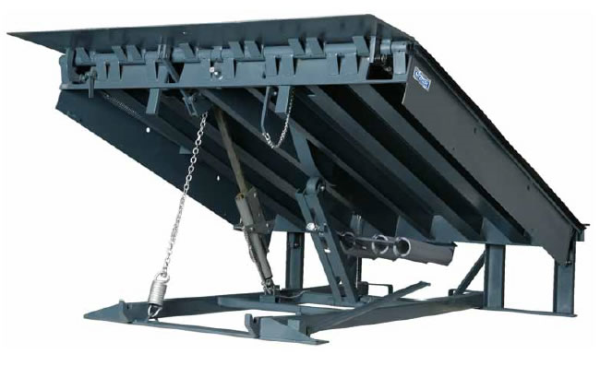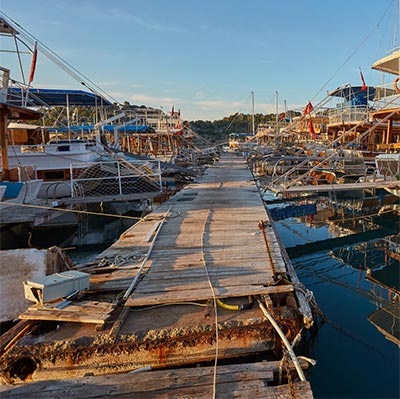Why Normal Maintenance Can Lower Future Dock Repairs
Why Normal Maintenance Can Lower Future Dock Repairs
Blog Article
Just How to Address Common Dock Repair Service Issues for Safe Water Activities

Identifying Common Dock Issues
Determining common dock problems is important for keeping the performance and security of your beachfront residential property. Routine inspections can aid discover problems prior to they become extreme, making certain both the long life of the dock and the safety and security of those that use it.
An additional typical problem is the degradation of flotation tools. These gadgets are important for keeping the dock resilient, and any type of damage or slits can trigger the dock to listing or sink. Frequently looking for leaks or water logged drifts can preempt a lot more substantial issues.
Furthermore, algae and barnacle buildup on the dock's surface area can create slippery and hazardous conditions. This biofouling not only poses a risk to customers but can likewise accelerate the degeneration of the dock materials.
Lastly, checking for indications of rust on metal elements is essential. Rust can compromise the integrity of the dock's framework, making it harmful. By regularly identifying these usual dock problems, you can make certain that your dock stays practical and safe and secure for years to come.
Repairing Rotting Timber
When dealing with the concern of decaying timber on your dock, it is essential to act quickly to avoid further degeneration. Begin by extensively evaluating the whole structure to recognize all affected areas. Make use of a screwdriver to probe the wood; if it sinks in quickly, the wood is likely decomposed and requires instant interest.
Once recognized, remove the deteriorated areas using a saw or carve. Make certain to cut back to healthy and balanced, strong wood, ensuring you remove all endangered product. After removal, deal with the staying wood with a timber chemical to avoid future rot. This therapy will help secure against moisture, which is the key reason for timber degeneration.
Following, change the removed areas with marine-grade lumber or pressure-treated wood, which are extra immune to water damage. Protect the new items with stainless-steel or galvanized bolts to avoid rust. In addition, using a waterproof sealant to the new timber can supply an extra layer of protection.
Safeguarding Loose Boards
Exactly how do you guarantee your dock stays functional and risk-free for all its users? One vital aspect is safeguarding loosened boards, which can otherwise position significant dangers. Loose boards not just boost the risk of stumbling yet can additionally compromise the architectural stability of the entire dock.

For reinstallation, use stainless or galvanized steel screws, as these products offer superior more helpful hints resistance to corrosion in aquatic settings. Make sure the screws are long enough to permeate deep right into the underlying support framework, however not so lengthy that they stick out through the dock's surface area. Pre-drilling pilot openings can aid avoid the timber from splitting.
Finally, maintain a regular assessment routine to identify and address any brand-new issues promptly. By protecting loosened boards successfully, you contribute to the overall safety and security and long life of your dock, making it a trusted system for water activities.
Stabilizing Unstable Pilings
Making sure the stability of unstable pilings is extremely important to maintaining a practical and safe dock. Unstable pilings can endanger the entire framework, posturing substantial risks to customers and potentially causing pricey repair services. The first step in maintaining these crucial elements is a detailed examination. Examine the pilings for signs of rot, damages, or shifting. Utilize a level to look for upright alignment and ensure they are driven deep enough right into the substrate to supply appropriate assistance.
If the pilings are discovered to be unstable, one effective method for support is making use of additional supporting. Cross-bracing with dealt with lumber or galvanized metal can considerably enhance security. Support the dental braces firmly to both the pilings and the dock frame to distribute lots equally.

Routine upkeep and periodic reassessment of the pilings' stability are crucial to making sure long-lasting dock security and functionality.
Changing Rusty Equipment
Dealing with unsteady pilings is just one facet of maintaining a dock's integrity; another critical hop over to these guys worry is replacing rusty equipment. Over time, exposure to wetness and salt can bring about the oxidation and rust of braces, screws, and bolts, endangering the whole structure's security. Routine evaluation for corrosion is necessary, specifically after extreme weather or seasonal changes.
When rustic equipment is recognized, immediate action is needed. Begin by choosing marine-grade stainless-steel or galvanized equipment, both created to stand up to the severe marine setting. Guarantee that you have the proper tools, such as screwdrivers and wrenches, to safely remove the old, rusty pieces without triggering additional damages to the dock.
After removing the rustic equipment, thoroughly clean the impacted areas to remove any kind of residual rust or particles. Apply a rust-inhibiting guide to revealed steel surfaces before mounting the brand-new hardware. Tighten all fixtures securely to avoid future helping to loosen, and occasionally examine the installations to make sure ongoing security.
Changing corroded equipment not just extends the dock's life-span yet additionally considerably enhances the security of water activities. By proactively taking care of rust, you safeguard both the structure and its individuals, guaranteeing a safe and secure and delightful waterfront experience.
Conclusion
Normal examinations and maintenance are vital to address common dock repair service concerns and ensure safe water activities. Such positive steps add to the total security and capability of dock frameworks, fostering a safe environment for water-based tasks.
Ensuring the safety and security of water tasks pivots considerably on the appropriate upkeep and repair service of anchors (Dock Repairs). These tools are essential for maintaining the dock buoyant, and any type of damages or leaks can create the dock to listing or sink. By consistently recognizing these usual dock issues, you can ensure that your dock stays safe and practical for years to come
Guaranteeing the security of unsteady pilings is vital to maintaining a functional and secure dock.Routine assessments and upkeep are vital to resolve common dock fixing issues and make certain over here safe water tasks.
Report this page